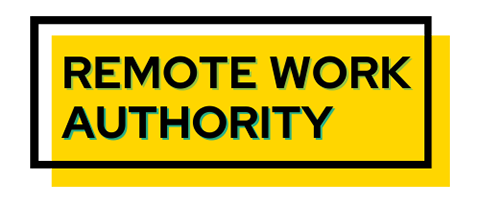As a remote worker, you can work from anywhere with sufficient Wi-Fi and an amiable work environment. Coworking spaces are an excellent choice for those who need or want to get out of the house. Each space is unique, and choosing a coworking space that fits your needs can result in more productivity, focus, creativity, and happiness.
Based on data gathered by TeamStage, there were only three coworking spaces in the world in 2005. By the end of 2019, there were 22,400, with approximately 6,300 in the United States. The industry shows no signs of slowing down, and analysts expect that about 5 million people will work from coworking spaces by 2024.
With so many options, choosing a coworking space has become more difficult. Before you start browsing, you must realize that not all coworking spaces are created equally. Think about what’s most important to you: privacy, security, atmosphere, or price.
What Is a Coworking Space?
A coworking space is a shared office space where remote workers, freelancers, and small businesses can rent desks, offices, or meeting rooms by the hour, day, week, or month.
Coworking spaces offer a variety of amenities, such as high-speed internet, coffee and snacks, and conference rooms. They can be an excellent option for people who want to avoid the isolation of working from home or who need a quiet place to focus on their work.

Why Do People Use Coworking Spaces?
People use coworking spaces for a variety of different reasons, including the following:
- To avoid isolation and loneliness when working from home
- To have a dedicated workspace where they can focus
- To meet other people who are working on similar projects
- To have access to amenities such as high-speed internet, coffee and snacks, and conference rooms
- To save money on office space
- To maintain an office vibe while working from the location of their choosing
- To be part of a community of like-minded people
12 Things to Look for When Choosing a Coworking Space
1. Trial Period or Day Pass
Committing to a coworking space without trying it out first is a common mistake. Many spaces entice you to sign immediately by offering a steep discount for signing a longer contract. However, if you can’t functionally work in the space, it’ll be just as useless as most people’s gym memberships.
Before choosing a coworking space, ask if the space offers a trial period or day pass. This will allow you to get a feel for the place, test the Wi-Fi and security, and determine if the coffee is strong enough.
2. Location
A safe neighborhood you feel comfortable in is the first factor to consider when discussing location.

Other than that, you also need to consider accessibility when choosing a coworking space. Is the coworking space near a major metro line, or is it easy to drive to without sitting in too much traffic? If you arrive by car, is there parking? If a client meets you at the coworking space, will they be impressed by the surroundings?
3. Number of Members
Ask the coworking manager how many people have memberships. Imagine if everyone showed up to work simultaneously on the same day. Would it be functional? Is there a limit to how many people can have memberships at once?
In many spaces, you’ll need to book a private room or meeting room in advance. Some spaces prefer that you make a reservation before coming in to sit in the public area, and in others, you rent a specific desk upon signing the contract that no one else will use.
While it is nice to know you’ll always have your favorite spot, some workers feel more inspired when they switch seats. A 2018 study by Capital One showed that 80% of their employees felt more productive with the opportunity to change locations while working.
4. Hours
If you have a job requiring you to log in at a particular hour, you must ensure the coworking space’s schedule fits with yours.
Many coworking spaces are open 24 hours and allow you to come and go as you please–some even have nap pods!
5. Cost
When choosing a coworking space, you must consider your salary vs. what you’re paying for the membership. Depending on the location of the coworking space, it may cost you between $204 and $475 per month or $20-$50 per day as a drop-in.
If the price seems steep (and it may be), consider what’s included. You’ll likely be saving money on coffee and possibly snacks, and you may be able to lower your Wi-Fi bill at home. The price of peace and having a place to concentrate is hard to put a number on.
6. Community
If you’re looking for a place to meet people and work, you’ll want to inquire about the social events in the coworking space. Some have dedicated areas for socializing, while others have community events such as happy hour, game nights, and art nights.

Try a third space if you are looking for something more social than a coworking space that still allows for creativity and workflow.
7. Wi-Fi Speeds
Depending on your career, the Wi-Fi speed available in a coworking space may significantly sway your decision. Ideally, a medium-sized coworking space will have internet speeds between 200 and 500 mbps. Use Ookla’s speed test to test upload and download speeds on the spot.
A good coworking space should also have backup internet connections if one drops.
8. Security
Consider your personal security and network security when choosing a coworking space. Will you feel comfortable leaving your computer or bag at a desk while you run to the restroom? Has the coworking space taken steps to deter hackers? Is the Wi-Fi network encrypted? Do they use a VPN?
9. Amenities
The amenities you look for come down to personal preference and necessities. Some complimentary amenities you might find in a coworking space include snacks, drinks, coffee, access to printers, copiers, projectors, marker boards, a kitchen, showers, and various chargers.
10. Design and Atmosphere
A pleasant atmosphere results in increased productivity and creativity. As you tour the coworking space, how do you feel? Is it aesthetically pleasing? Are there enough private spaces, phone booths, and meeting rooms? Pay attention to the noise level as well.

Are there any plants? Aside from being nice to look at, plants offer many benefits in an office setting. They lower stress, improve oxygen levels, and increase productivity.
11. Rules
Thoroughly reading through the rules before choosing a working space is essential. Does the space allow clients to stop by? Is it animal-friendly? Are there quiet hours? Is there a dress code?
12. Reputation
Reading about other’s experiences will give you a lot of insight. Many people leave honest reviews about the environment, the staff, the cleanliness, internet speeds, and more.


